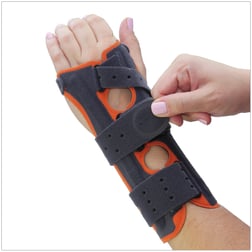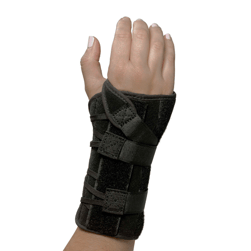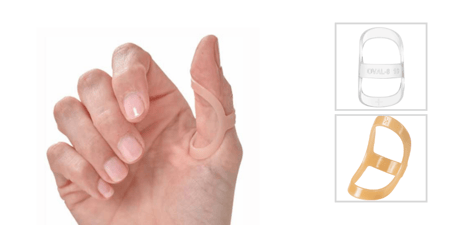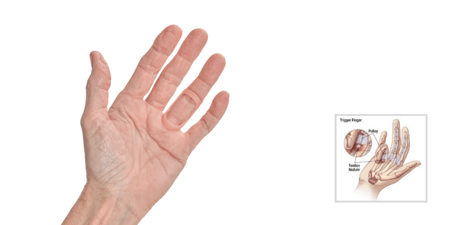Types of Carpal Tunnel Release Surgery
Carpal tunnel syndrome is the most common nerve compression and at any one point in time it impacts 3% of the population. Surgery for a carpal tunnel release is considered a gold standard in treatment and is performed when symptoms are severe enough to warrant surgical intervention. There are two main categories for types of carpal tunnel releases at this point in time. One is a mini open procedure in which the transverse carpal ligament (the roof of the carpal tunnel) is transected using a small open cut at the volar aspect of the proximal palm. The second is an endoscopic procedure in which a camera is used to direct the surgeon’s cutting of the transverse carpal ligament.
| View our Videos for information on how to treat wrist conditions using an orthosis. |
Post-Operative Therapy
Generally speaking, individuals do well following carpal tunnel release and skilled therapy is not always needed. Regardless of the type of carpal tunnel release that was performed, an individual’s symptoms drive post-operative therapy. Individuals may attend hand therapy if they experience difficulty regaining strength or scar site tenderness as examples. As far as I know, post-operative protocols do not differentiate between surgical procedures but do follow typical healing timeframes and symptom report.
The following is a generalized outline for therapy protocol for a carpal tunnel release.
- Bulky surgical dressing (to assist inflammation and bleeding) for a few days post operatively.
- Immediate active range of motion exercises with tendon gliding and light use of the hand following surgery.
- Initiate scar care following suture removal, when steri-strips come off or once there is sufficient healing at the scar.
- Begin performing resistive tasks and/or strengthening at 3-4 weeks after surgery as pain permits and as needed to regain function.
- Use an orthosis following surgery only if symptoms require (pain is present) or if a surgeon recommends this.
As mentioned, typically patients do well following a carpal tunnel release and surgery is a recommended intervention for carpal tunnel syndrome symptoms. There have been many studies to investigate outcomes following a carpal tunnel surgery, including studies that have evaluated the outcomes for individuals who have mini open procedures versus those with endoscopic releases.
According to systematic review of many randomized controlled trials on this subject matter, endoscopic release allows earlier return to work and improved strength earlier post-operatively than open release, however, outcomes for both procedures are similar at 6 months following surgery. Further findings suggest less scar tenderness with endoscopic procedure but a greater risk of nerve injury when the scope is used.
Patients considering carpal tunnel release should consult with a hand surgeon that is trusted and allow him or her to make the decision on what type of procedure should be performed based on their comfort and confidence.
If pain is present following surgery, the hand surgeon may recommend using an orthosis. The Fix Comfort Wrist Brace and the 3pp Choice Wrist Brace comfortably cushion and provides support to the wrists to help relieve pain and swelling.
Fix Comfort Wrist Brace
3pp Choice Wrist Brace
Blog References: For more information on this topic, click to see the references for this blog post.






